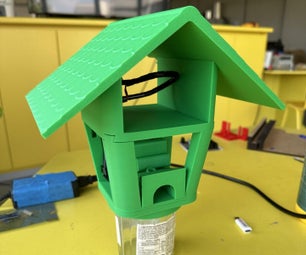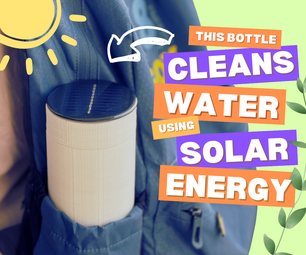Introduction: Powered USB Hub for Rtl-sdr
Powered USB hub. I use it with a battery pack for rtl-sdr on my phone, which doesn't supply enough current and that means I can't do things like ADS-B reception and tune in the world.
Step 1: Gather Materials and Tools
Pictured are, from bottom counter clockwise:
1. unpowered USB hub
2. cutting board (optional)
3. USB battery pack. This one is capable of 1A, but more is always better.
4. USB OTG cable
5. electrical tape. Use instead of shrink tube if in a hurry
6. wire strippers
7. test bulb. Completely optional. I didn't use mine. I was feeling froggy, so I leapt in head first.
8. wire cutters. I used mine to cut the electrical tape.
9. shrink tube. Can be used instead of tape.
Spiraling inward, additional items are:
10. donor USB cables.
11. razor knife.
1. unpowered USB hub
2. cutting board (optional)
3. USB battery pack. This one is capable of 1A, but more is always better.
4. USB OTG cable
5. electrical tape. Use instead of shrink tube if in a hurry
6. wire strippers
7. test bulb. Completely optional. I didn't use mine. I was feeling froggy, so I leapt in head first.
8. wire cutters. I used mine to cut the electrical tape.
9. shrink tube. Can be used instead of tape.
Spiraling inward, additional items are:
10. donor USB cables.
11. razor knife.
Step 2: I'm Lucky, My Hub Has a Removable Cable!
Step 3: Cut the Cables
Cut the two cables. Strip the sheath from them. Discard one of the ends opposite the A end, keeping the square A ends and one of the ends that goes into the hub.
Step 4: Connect the Wires
Connect all three grounds together. This is usually the black wire.
Connect the positive wires, usually red, from the power cable and the piece going to the hub. DO NOT CONNECT THE RED FROM THE DATA CABLE. THIS COULD FRY SOMETHING! It might not, but it could. Clip the red wire from A end of data cable off.
Connect the other two wires as they were before you cut the cables, except do not connect those two wires to the power cable.
Tape or shrink tube things together.
Connect the positive wires, usually red, from the power cable and the piece going to the hub. DO NOT CONNECT THE RED FROM THE DATA CABLE. THIS COULD FRY SOMETHING! It might not, but it could. Clip the red wire from A end of data cable off.
Connect the other two wires as they were before you cut the cables, except do not connect those two wires to the power cable.
Tape or shrink tube things together.
Step 5: Mark the Power Cable
I made a flag of electrical tape and cut out a small "+" so that I could keep it clear. any markings you like should be fine.
Step 6: Hook It Up
Plug power cable into USB battery pack, or other USB charger. plug data cable into the hub and, in my case, the OTG cable. Plug whatever you need into the hub. Give it a go.
I hope this helps.
Be brutal in the comments, this is my first Instructable and I love adverse reactions.
I hope this helps.
Be brutal in the comments, this is my first Instructable and I love adverse reactions.
Step 7:
Step 8: Luck Again! One of My Cables Was Power Only.
This was only lucky because it meant I didn't need to clip back any wires. If you are using two cables with four wires each, clip off the red, positive wire from the cable that will connect to the computer or OTG cable, in my case. Not pictured, clip back the white and green on the power cable







